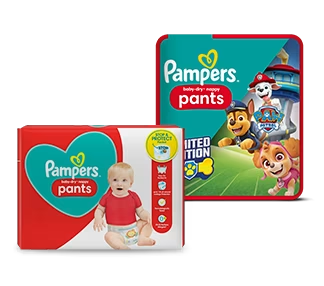
When Do Babies Develop Pincer Grasp?
Watching your baby grow and develop skills is one of the most exciting parts of parenting. One of those big development milestones is the pincer grasp, when your little one can start using their thumb and forefinger together. This small but important fine motor skill will help your little one to do things on their own and better explore the world around them! Read on to learn at what age your baby may develop the pincer grasp and what activities could help promote this newfound skill.
What Is the Pincer Grasp?
Pincer grasp refers to using the forefinger and thumb together to ‘pinch’ or grasp an object. The pincer grasp is an important fine motor skill that’s key to many functions that your little one will use in the future, including
self-feeding with fingers or utensils
doing up buttons, zips and shoelaces
brushing teeth and hair
cutting with safety scissors
holding a pencil, drawing and writing
opening packaging
playing independently (lifting and moving objects).
At What Age Does the Pincer Grasp Develop in Babies?
Babies tend to develop the pincer grasp around 9 or 10 months of age. Earlier than that, you may notice your infant using their hands in what’s described as a raking motion to pick up objects. With a claw-like grip, babies use all fingers and thumb to ‘rake’ something into the palm of their hand rather than picking it up with a pincer grasp. Transitioning from a raking motion and palmer grasp (holding something in the palm of their hand with all fingers) to the pincer grasp is usually influenced by your little one’s sense of curiosity. Babies want to pick up and hold objects and will eventually learn how to do so with their thumb and forefinger. Your baby will first learn how to bring the thumb and forefinger together, then progress with using the motion to grasp an object. Self-feeding is another motivation, as babies learn how to pick up small pieces of food to put in their mouths or use a spoon with the pincer grasp. Introducing solid foods to your little one typically starts around 6 months, so pincer grasp development may soon follow.
What if Your Baby Has a Delayed Pincer Grasp?
Children develop at different rates, so there’s no need to worry if your baby has a delayed pincer grasp compared to other children you know. Although most babies develop pincer grasp around the age of 9 or 10 months, some children develop it earlier or later. If you have any questions regarding your child’s rate of development, you can always ask your health visitor or doctor for advice, although most likely you’ll just need to give it time.
How to Promote the Pincer Grasp: 10 Activities for Infants
If you start to notice the raking motion or your baby is beginning to dive into the world of solid foods, you can help support pincer grasp and fine motor skills development with various activities, including:
Squeezing. Squeezing something can help promote the action of pincer grasp., especially when doing it with the thumb and forefinger. Start small with plasticine or dough then try more challenging tasks, like moving clothes pegs.
Turning pages. It’s difficult to turn book pages with a palmer grasp, so encourage your little one to try the pincer grasp and turn the pages when you read together.
Popping plastic wrap. Put that leftover packaging to use by letting your baby pop the air bubbles in plastic wrap! They’ll surely need to use their thumb and finger with a little pressure, so it’s great practise for the pincer grasp.
Sorting. Set up a sorting activity for your baby using their toys, such as larger blocks or plush toys. Your little one can using the pincer grasp to sort objects is a great way to support this important development.
‘Feeding’ something. Using an old tennis ball or box, create something that has a ‘mouth’ and ask your little one to feed it! Much like the sorting activity above, your baby will need to pick up small objects with their pincer grasp and put them into the open ball or slit on the box.
Plasticine hedgehog. Ask your baby to help you make a hedgehog using plasticine and wooden sticks. First, your little one can mould the clay into the shape of a hedgehog and even try to make small parts for the eyes and ears. Then they can use the pincer grasp to push thin wooden sticks into the clay.
Make a necklace. If your baby is old enough, they can cut plastic straws into pieces using safety scissors. Then have them thread the pieces onto a string to create a necklace. Both the cutting and threading require the pincer grasp.
Tongs or tweezer pickup. Using tweezers or kitchen tongs, your baby can build pincer grasp fine motor skills by picking up objects and moving them into a container.
Pretend play. Pretend play and other interactive baby games support the develop of many skills, and the pincer grasp is one of them. Ask your child to pretend that they are a bird and make a beak with their thumb and forefinger – or they can pretend to be a dog and use the motion of the pincer grasp to make floppy ears.
Secure fingers. You may notice your child bending all fingers when using their pincer grasp. To help develop the use of just two fingers, create a challenge and ask your baby to hold something in place with their third, fourth and little finger while using the pincer grasp.
FAQS AT A GLANCE
Babies tend to develop the pincer grasp at around the age of 9 or 10 months. Although your 6-month-old baby may not use the pincer grasp yet, you may notice them ‘raking’ things and using the palmer grasp (holding objects in their palm).
The Bottom Line
At the age of 9 or 10 months old, your baby may begin attempting the pincer grasp, which is using the forefinger and thumb to pick up objects. Around this time, general curiosity and eating finger foods may help prompt the use of the pincer grasp. In the beginning, you may notice a raking motion as your little one picks up objects using the entire hand, called the palmer grasp. If you like, you can encourage your infant’s pincer grasp development by providing certain activities for building this fine motor skill. Examples include moulding plasticine into specific shapes, sorting small objects, moving clothes pegs or turning pages in books. If your baby appears to have a delayed pincer grasp, keep in mind that children develop at different rates. Speak to your health visitor or doctor if you have any questions or concerns regarding your baby’s development, but most likely, your little one will be mastering that pincer grasp in no time!
The information in this article is based on the expert advice found in trusted medical and government sources, such as the National Health Service (NHS).The content on this page should not replace professional medical advice. Always consult medical professionals for full diagnosis and treatment.
Read more about Baby
Related Articles
Join Pampers Club and get:















